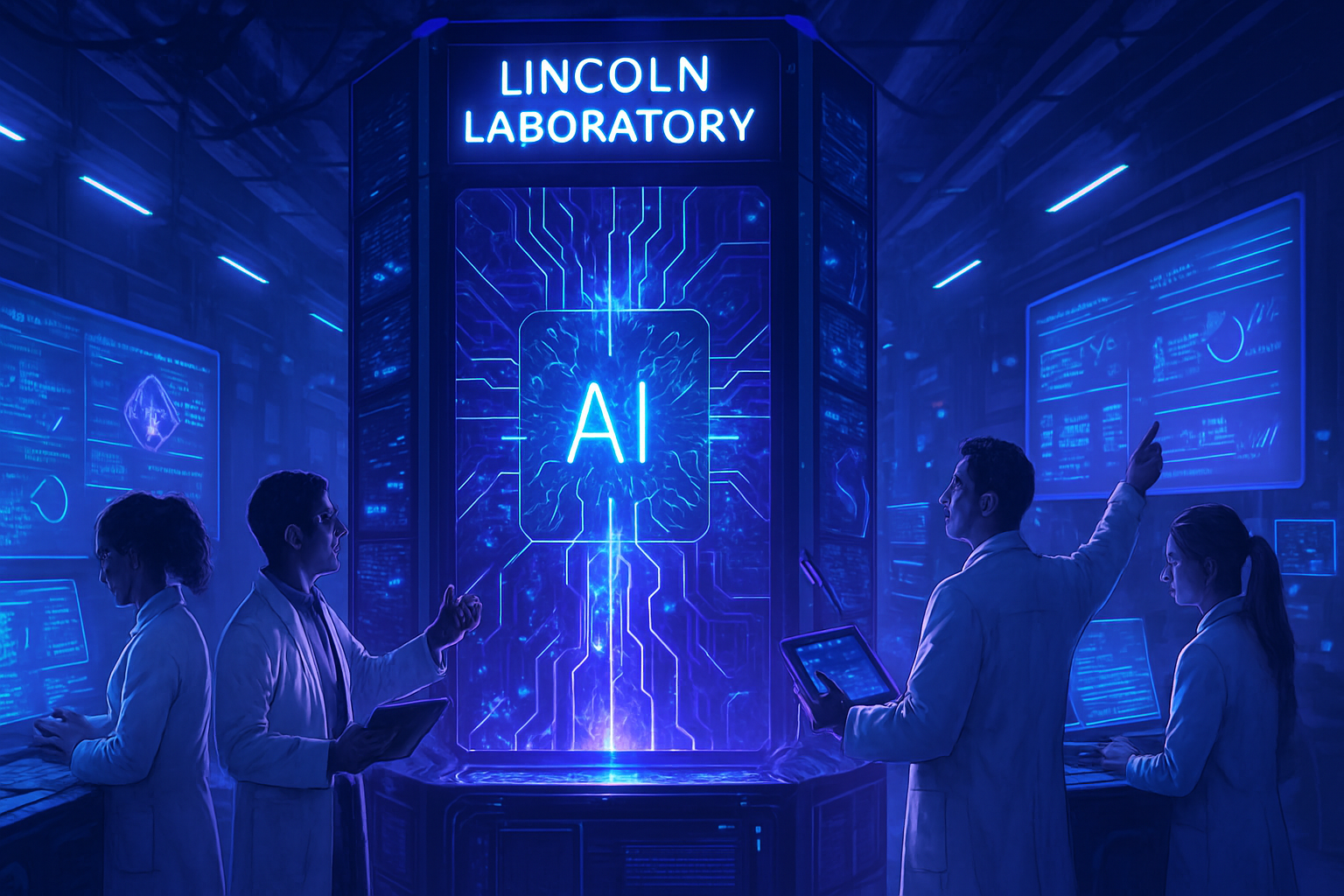The Lincoln Laboratory is redefining the boundaries of artificial intelligence with its most powerful supercomputer among American universities. A revolutionary system, TX-GAIN, emerges, capable of processing unprecedented amounts of data. This technological advancement propels scientific research to new heights, paving the way for new breakthroughs in innovation, from physical simulation to data analysis. The power of TX-GAIN, driven by over 600 graphics processing units, represents an indispensable asset for researchers. Collaboration with top institutions at MIT suggests a promising future for generative artificial intelligence.
The TX-GAIN Supercomputer: A Technological Revolution
The new TX-Generative AI Next (TX-GAIN) computing system installed at the Lincoln Laboratory Supercomputing Center (LLSC) positions itself as the most powerful AI supercomputer at any American university. Recognized by the TOP500 ranking, TX-GAIN joins the ranks of high-performance systems, supporting research efforts at the Lincoln Laboratory and on the MIT campus.
Scientific and Technical Applications
This supercomputer will enable researchers to achieve significant scientific and technical advancements. Jeremy Kepner, a leading researcher at the LLSC, emphasizes its fundamental role in supporting generative AI, physical simulation, and data analysis across various research domains.
The supercomputers at LLSC have been mobilized to simulate billions of air interactions, serving the development of collision avoidance systems for the Federal Aviation Administration. Moreover, they have been utilized in training models for complex autonomous navigation tasks, collaborating with the Department of Defense.
TX-GAIN’s Capabilities and Infrastructure
With over 600 NVIDIA graphics processing units specially designed for AI operations, TX-GAIN achieves a performance of two AI exaflops. This extraordinary result establishes it as an undisputed leader in AI systems within universities and in the Northeast region. Furthermore, this infrastructure requires significant energy management, leading the LLSC to conduct research on energy consumption reduction methods.
The Impact of TX-GAIN on Collaborative Research
TX-GAIN is not limited to supporting specific programs at the Lincoln Laboratory. It also enhances research collaborations across the MIT campus, particularly with entities such as the Haystack Observatory, the Center for Quantum Engineering, and Beaver Works. The partnership with the Department of Air Force–MIT AI Accelerator illustrates this dynamic, rapidly prototyping AI technologies to optimize overall operations.
Accessibility and Ease of Use
The LLSC stands out for its interactive computing approach, allowing users to access its powerful systems without requiring advanced expertise in algorithm configuration. This model tames the complexity of data analysis while providing an experience similar to using a laptop.
Kepner explains that “the LLSC aims to make using the supercomputer accessible and intuitive for everyone.” The growing capabilities of TX-GAIN enhance its relevance in current research projects, whose scope far exceeds the capabilities of a simple computer.
The Technological Legacy of the LLSC
The supercomputers at LLSC bear the “TX” nomenclature in homage to the Transistorized Experimental Computer Zero (TX-0) from 1956. This historical predecessor, one of the first transistor-based computers, laid the groundwork for human-computer interactions and artificial intelligence. TX-GAIN continues this legacy, marking a major advancement in the field.
The promising results generated by TX-GAIN provoke thoughts about the future of AI technology. Its ability to examine complex protein interactions represents a turning point in protein characterization, particularly for applications in biological defense.
Frequently Asked Questions about the Lincoln Laboratory’s AI Supercomputer
What is the name of the most powerful AI supercomputer at American universities?
The supercomputer is called TX-Generative AI Next (TX-GAIN).
Why is TX-GAIN considered the most powerful AI supercomputer?
It is recognized for its ability to achieve a performance of two AI exaflops, enabling it to perform extremely complex calculations quickly and efficiently.
What types of research are supported by the TX-GAIN supercomputer?
TX-GAIN supports a variety of research, including generative artificial intelligence, physical simulation, and data analysis across diverse fields of science and engineering.
How does TX-GAIN assist researchers in their projects?
It allows researchers to model complex interactions, perform large-scale simulations, and quickly analyze significant amounts of data, thereby facilitating meaningful scientific advancements.
What technology powers the TX-GAIN?
The supercomputer is powered by over 600 NVIDIA graphics processing units (GPUs) specially designed for artificial intelligence operations, in addition to traditional high-performance hardware.
How does LLSC facilitate user access to supercomputing?
LLSC has developed software that allows users to access its powerful systems without requiring advanced skills in algorithm configuration for parallel processing, making supercomputing accessible like on a laptop.
What are some examples of TX-GAIN applications?
TX-GAIN has been used to simulate encounters between aircraft to develop collision prevention systems, as well as to train models for autonomous navigation, among other applications.
How does LLSC seek to manage TX-GAIN’s energy needs?
LLSC utilizes an energy-efficient data center and conducts research on various energy consumption reduction methods, including software that can cut up to 80% of the energy required to train an artificial intelligence model.
What collaborations are strengthened thanks to TX-GAIN?
TX-GAIN enhances research collaborations with other entities on the MIT campus, such as the Haystack Observatory and the Quantum Engineering Center, as well as the Air Force-MIT AI program, among others.
What advantages does TX-GAIN bring to data analysis?
It allows for faster and more in-depth data analysis, which is essential for many government-funded projects, thereby fostering discoveries in various fields.






